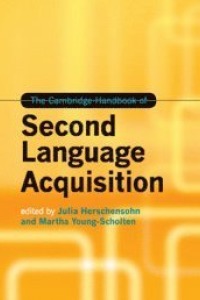
Liknande böcker
Single-Word Usage, Cognitive Development, and the Beginnings of Combinatorial Speech : A study of ten English-speaking children
Bok av Maris Monitz Rodgon
Previous investigators have believed that there is a 'holophrastic period' during the normal course of language acquisition, i.e. a period in which a child uses a single-word utterance to express something similar to the meaning which adults convey through the use of a relation, such as Fillmore's case relations, which involve more than one word. Some investigators have even attributed to the holophrase the meaning conveyed by an entire adult sentence. Previous studies have also provided evidence that from the onset of the holophrastic period, at about the age of twelve months, until the appearance of combinatorial speech, at about the age of eighteen months, the use of holophrases undergoes considerable development. This research therefore has three major goals; To document the usage of holophrastic or relational single-word speech, to demonstrate continuity in three linguistic relations from the end of the holophrastic period into the beginnings of the combinatorial period and to provide some insight into the relationship between linguistic and cognitive abilities at the end of the holophrastic period, which, of course, coincides with the end of Piaget's sensory-motor period.







